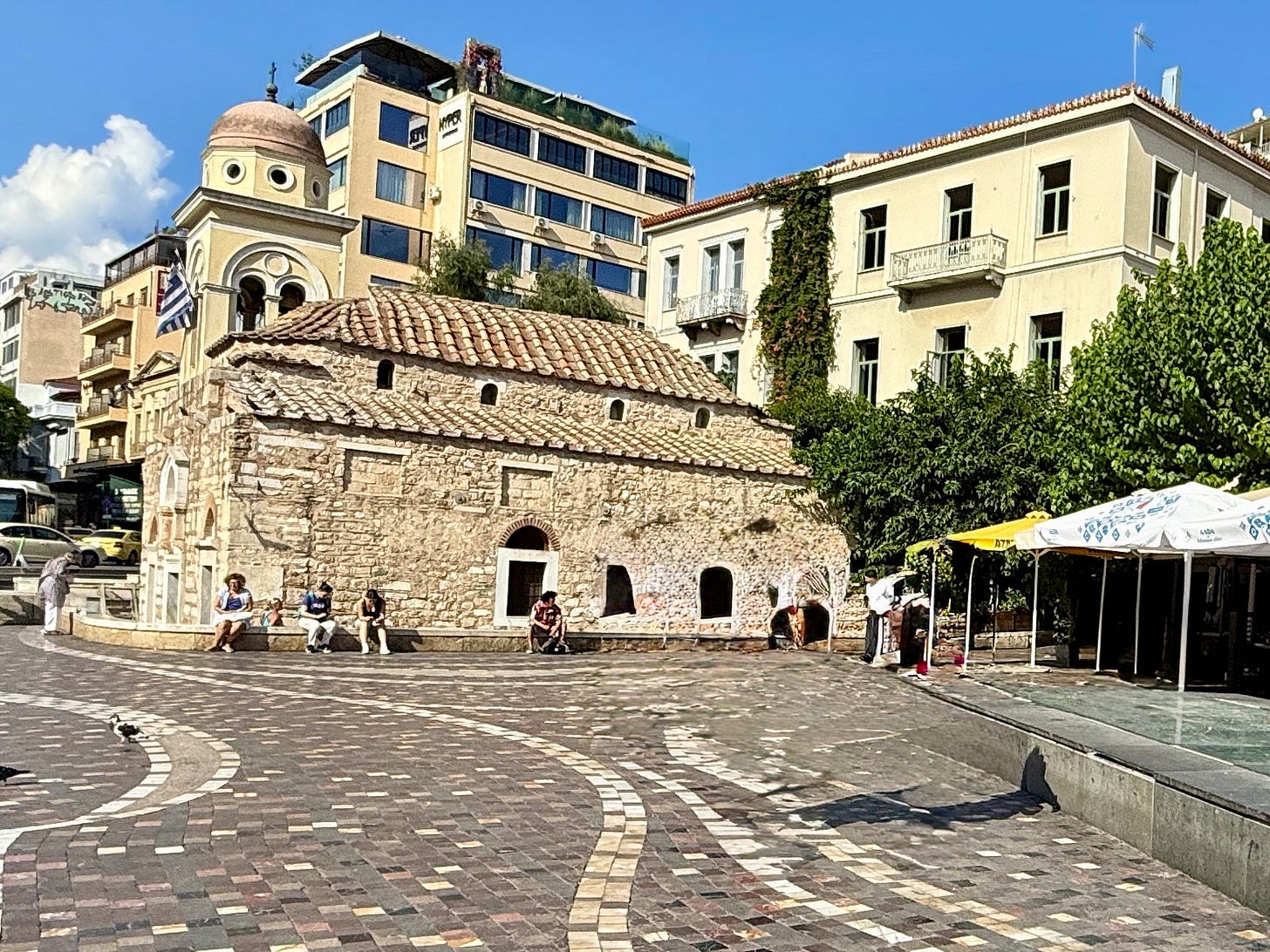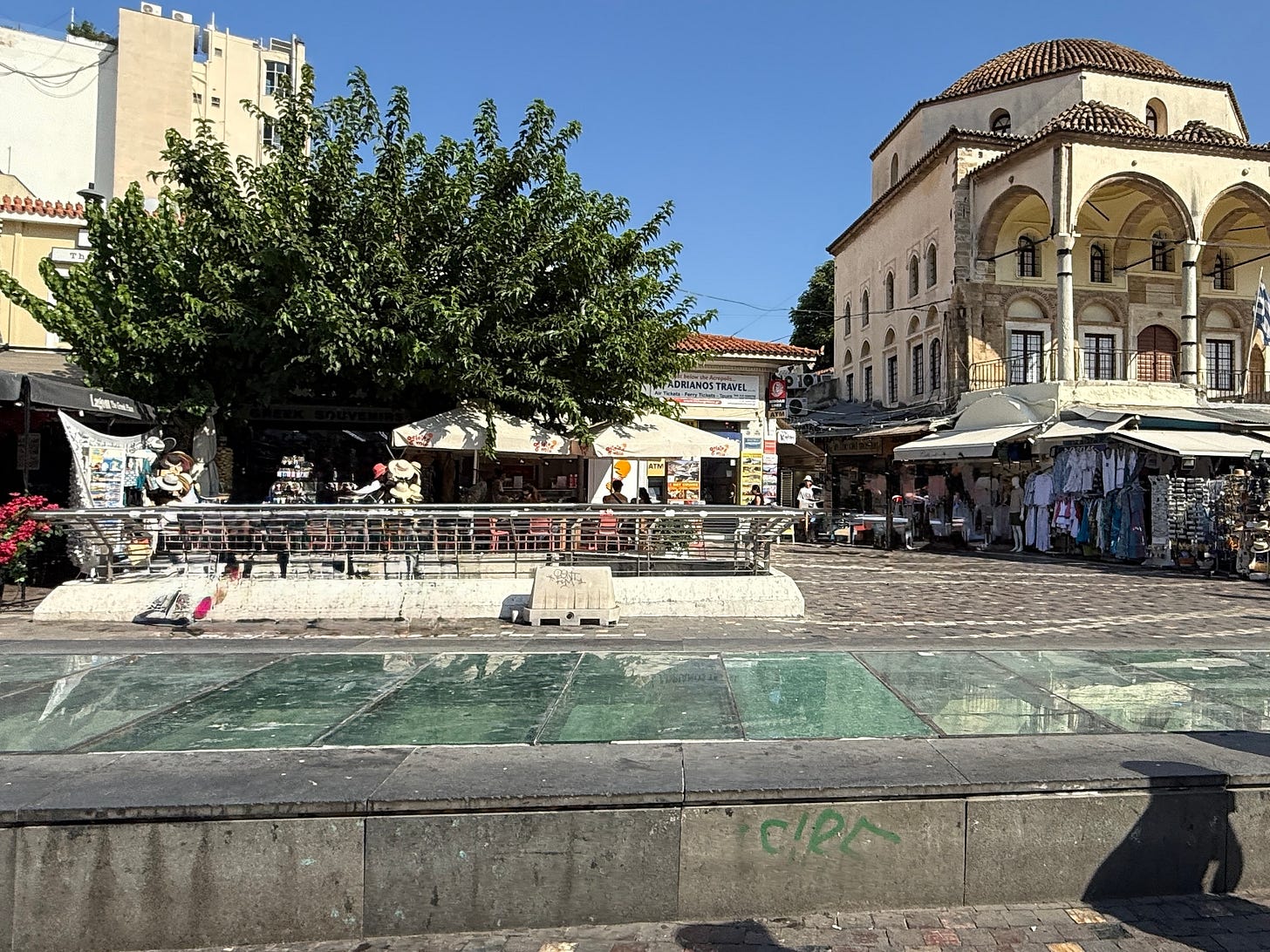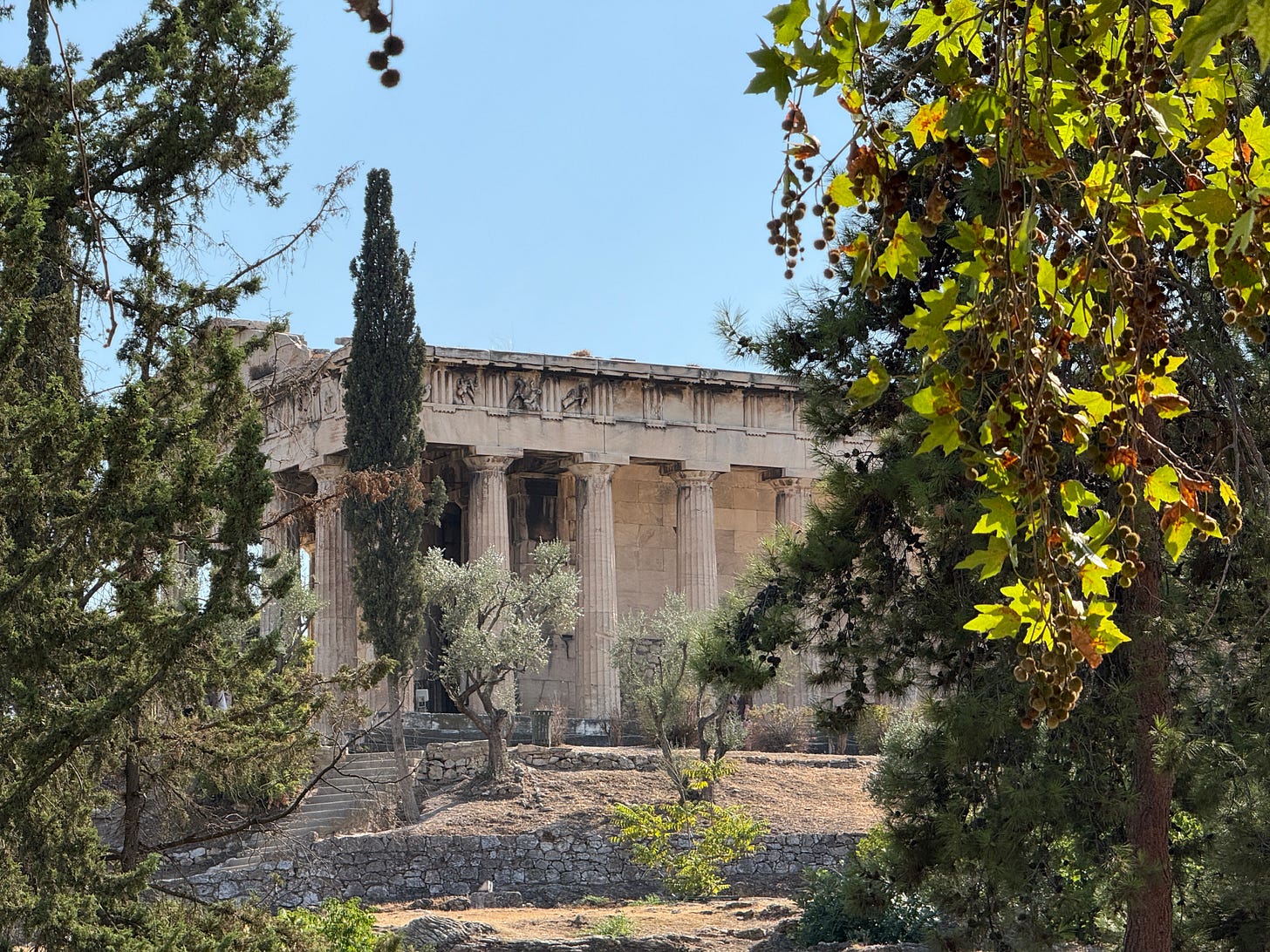Four empires, one square
2,500 years of Athenian empire and colonisation compete with cheap tourist trash. Travel was the winner on the day.
There’s a cool spot in Monastiraki Square, near the Athens Flea Market, where you can see evidence of thousands of years of empire and colonisation.
Directly in front of you (behind the railing) is an open-air museum of a water system built around the ancient Eridanos River - a sacred, buried stream that dates back to over 3,000 years ago.
When they built the metro in the 1990s, the riverbed surfaced. It caused all kinds of problems, including flooding a nearby cemetery FROM UNDER THE GROUND.
Around the corner is Hadrian’s Library, built in 132 AD by the Roman emperor Hadrian - one of the OG public libraries. It had thousands of scrolls, multiple public meeting rooms, and was the size of a football field. People starting trashing and burning it around 130 years later.
Once the Christians took over, they burned the remaining books (/papyrus.) Which is why we have access to less than 1% of the work produced by ancient Greeks. People take Instagram photos there now.
To your left is a wee Byzantine church. This is the last trace of a nunnery from around the 10th century that gave Monastiraki its name (“little monastery”). The bigger complex once took up what is now a prime spot for buying Greek souvenirs, a shrine to late-stage capitalism.
Here are some Made In China drama masks you can buy in the square today. The Greeks and Romans used them until the Christians came and cancelled theatre. The masks would hide the actor’s face because the same person would play multiple roles, (sometimes all of them!) and would also project their voice to the audience. Clever.
The Christians were in charge until the 1450s, when the Turks rolled in. Behind the water ruins, on the right, is the Ottoman-era Tzistarakis Mosque. It was built in 1759, and is now a folk art museum. The Ottomans ruled the roost from 1456 until 1821, when the Greek war of independence booted them out.
Greece has been at war for 3200 of the last 3500 years. It’s partly a geography thing - they’re right in the middle of some key trade routes. But there's been a bunch of civil war too. The Spartans/ Athens war in 400ish BC really did them in and made them ripe for Macedonian and then Roman conquest, which is a shame after they'd all just joined forces to beat back the Persians.
On the bright side, this temple (The Sanctuary of Aphrodite Urania), near the ancient Athens agora, was apparently built by Aphrodite’s crafty husband Hephaestus. Which seems unlikely because he’s a literal God, but who wants to stand in the way of a good story.
Either way I'm pretty impressed with the craftsmanship because it’s the oldest surviving roof in Athens, at 2400 years old, and stayed up through all those wars and conquests.
In New Zealand we think a 100 year old house is ancient.
My 40 year old house needs work on the roof already, but I can also reach Greece in 25 hours, for $1500, and take home plastic versions of their ancient treasures so who's the real winner here?








Didn't actually know we only had access to 1% of the ancient Greeks works. So the ones we are so excited about today may not have been the best ones, just the ones that survived 🤔
Alicia, there is much debate about the demise of Alexandra's Library. https://skeptics.stackexchange.com/questions/20453/did-christians-burn-the-great-library-of-alexandria
On another note, I read a blog yesterday about a bloke who'd just bought a cordless drill to do some maintenance on his farmhouse that was built in 1773! Sailors had only just started visiting NZ to plunder the seals and whales, and no-one was yet building seriously here.
It takes a certain faith and belief in the future, and substantial wealth, to build for permanence.